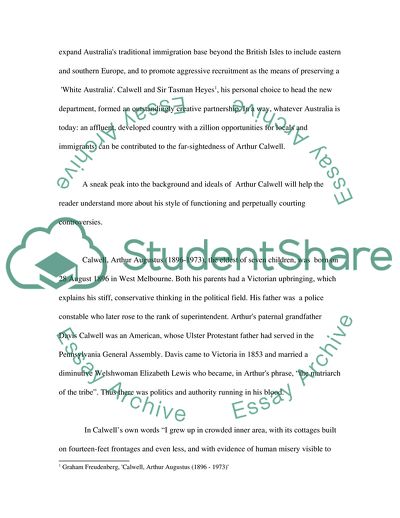Cite this document
(Migrants, Refugees, and Australian Society Essay, n.d.)
Migrants, Refugees, and Australian Society Essay. Retrieved from https://studentshare.org/sociology/1709127-subject-migrants-refugees-and-australian-society-what-were-the-effects-of-arthur-calwells-background-temperament-ideals-and-ambitions-upon-the-evolution
Migrants, Refugees, and Australian Society Essay. Retrieved from https://studentshare.org/sociology/1709127-subject-migrants-refugees-and-australian-society-what-were-the-effects-of-arthur-calwells-background-temperament-ideals-and-ambitions-upon-the-evolution
(Migrants, Refugees, and Australian Society Essay)
Migrants, Refugees, and Australian Society Essay. https://studentshare.org/sociology/1709127-subject-migrants-refugees-and-australian-society-what-were-the-effects-of-arthur-calwells-background-temperament-ideals-and-ambitions-upon-the-evolution.
Migrants, Refugees, and Australian Society Essay. https://studentshare.org/sociology/1709127-subject-migrants-refugees-and-australian-society-what-were-the-effects-of-arthur-calwells-background-temperament-ideals-and-ambitions-upon-the-evolution.
“Migrants, Refugees, and Australian Society Essay”. https://studentshare.org/sociology/1709127-subject-migrants-refugees-and-australian-society-what-were-the-effects-of-arthur-calwells-background-temperament-ideals-and-ambitions-upon-the-evolution.


